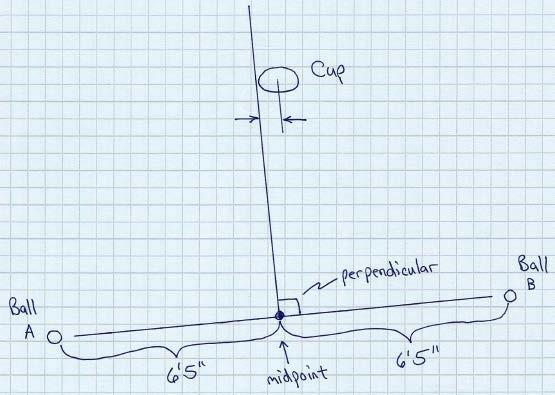**Analyzing Golf Swings Through the Lens of Geometry and Kinematics**
**Geometry and Kinematics in Golf Swings**
Golf swings are a captivating display of precision, coordination, and power. Players strive to achieve the perfect swing by mastering the complex interactions between their bodies, the club, and the ball. By incorporating concepts from geometry and kinematics, players and coaches can gain deeper insights into the mechanics of the golf swing.
**The Geometry of a Golf Swing**
The golf swing can be analyzed in terms of various geometrical principles. The angles formed by the golfer’s body in relation to the club and the ball play a crucial role in determining the trajectory and distance of the shot. For instance, the angle of the clubface at impact influences the direction in which the ball will travel, while the angle of the golfer’s spine affects the launch angle.
Moreover, the arc traced by the clubhead as it moves through the swing can be described in geometric terms. Understanding the shape and dimensions of this arc can help golfers optimize their swing path for maximum efficiency and accuracy. By visualizing the swing as a series of geometric movements, players can identify areas for improvement and refine their technique accordingly.
**Kinematics of Golf Swings**
Kinematics, the branch of mechanics that deals with the motion of objects, provides a framework for analyzing the dynamic aspects of a golf swing. By studying the velocities, accelerations, and forces involved in the swing, players can uncover valuable insights into the mechanics of their performance.
For instance, the speed at which the clubhead is traveling at impact is a critical factor in determining the distance of the shot. By measuring and analyzing the clubhead speed throughout the swing, players can identify opportunities to increase their power and consistency.
Furthermore, the sequencing of movements in a golf swing can be studied using kinematic analysis. Understanding the precise order in which different body parts move during the swing can help players optimize their timing and coordination, leading to more consistent and powerful shots.
**Applying Geometry and Kinematics to Improve Performance**
By integrating concepts from geometry and kinematics into their practice routines, golfers can enhance their understanding of the mechanics underlying their swings. Players can use tools such as launch monitors, motion capture systems, and 3D modeling software to collect data on their swings and analyze them from a geometric and kinematic perspective.
Coaches can also leverage these insights to provide targeted feedback and guidance to their players. By identifying specific geometric and kinematic parameters that are hindering a player’s performance, coaches can tailor their instruction to address these areas and help players make meaningful improvements.
In conclusion, the application of geometry and kinematics to the analysis of golf swings offers a valuable framework for understanding and optimizing performance. By delving into the geometric principles and dynamic movements that underlie the golf swing, players and coaches can unlock new possibilities for improvement and mastery on the course.



























